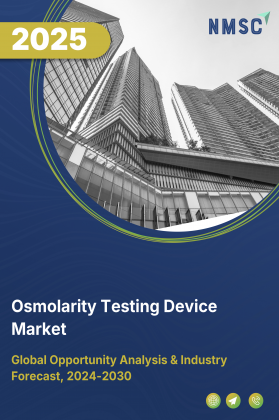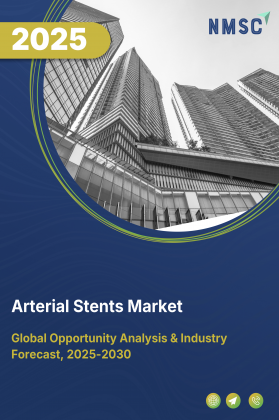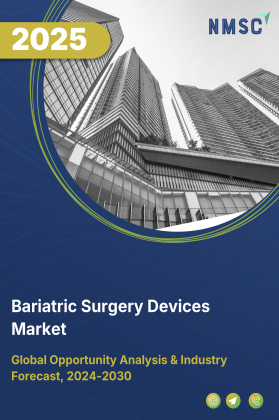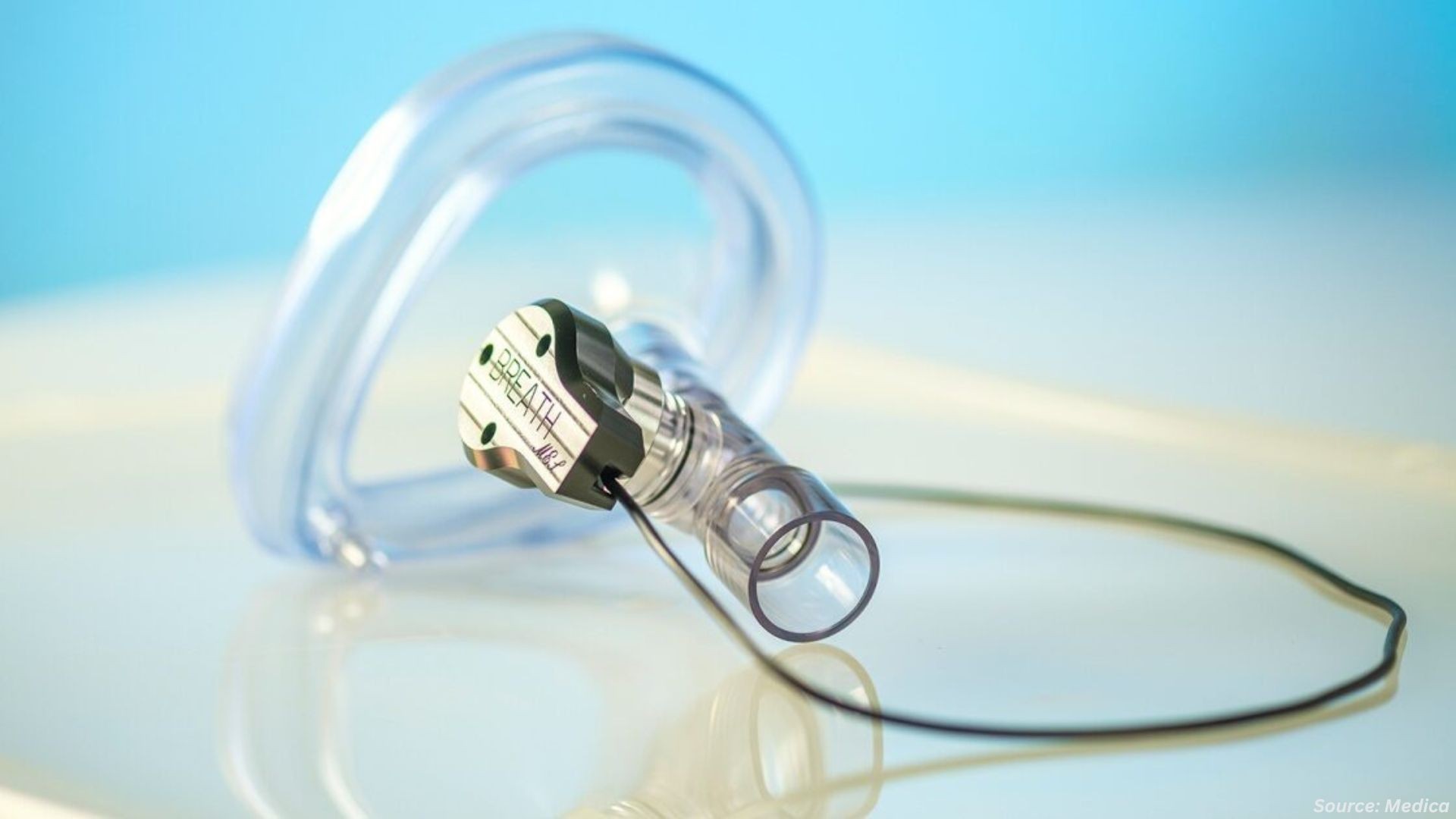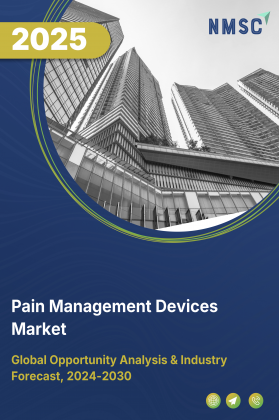
Pain Management Devices Market by Technology (Electrical Stimulation & Neuromodulation, TENS, EMS, PENS, Drug Delivery, Physical Energy Modalities, and Others), by Pain Condition (Pathophysiology, Anatomic Origin, and Others), by Invasiveness Level (Non-Invasive, Minimally Invasive, and Surgically Implanted), by End-User (Acute Care Settings, Chronic/Long-Term Care Settings, and Others) – Global Opportunity & Forecast, 2024–2030.
Industry Overview
The global Pain Management Devices Market was valued at USD 6.90 billion in 2024 and is predicted to reach USD 7.57 billion by 2025. The industry is expected to reach USD 12.07 billion by 2030 with a CAGR of 9.78% from 2025-2030.
The pain management devices market growth is witnessing rapid evolution driven by multiple converging factors. The escalating burden of chronic diseases and cancer, combined with a growing aging population experiencing age-related pain conditions, is significantly increasing the demand for effective, non-invasive pain relief solutions.
Simultaneously, rising healthcare expenditure and greater investments in advanced medical technologies are supporting broader access and innovation within the sector. The integration of artificial intelligence is further transforming the landscape, enabling personalized, real-time treatment adjustments and enhancing therapeutic outcomes.
However, despite these advancements, the high cost of cutting-edge devices remains a major barrier, particularly in low- and middle-income regions, potentially limiting the equitable adoption of these solutions worldwide.
Surging Chronic Disease and Cancer Incidence Drives Demand for Advanced Pain Management Devices
The growing prevalence of chronic conditions and cancer continues to drive the pain management devices market demand. For instance, in 2024 alone, the United States is projected to witness approximately 2 million new cancer cases and over 611,000 cancer-related deaths, while Canada anticipates around 247,000 new cases. These rising numbers reflect a broader global trend, with WHO projecting a 77% increase in global cancer incidence, from 20 million cases in 2022 to over 35 million by 2050.
As long-term pain becomes increasingly common among patients with chronic diseases and terminal illnesses, the adoption of advanced pain management devices is accelerating to meet the growing need for effective, accessible care.
Aging Population Spurs Demand for Non Invasive Pain Management Technologies
The global rise in age-related health issues, especially chronic pain, is intensifying the demand for non-invasive pain management solutions such as spinal cord stimulators and TENS units. According to United Nations data, in 2024, approximately 10.3 % of the world’s population is aged 65 or older.
As the proportion and absolute number of older adults increases, so does the prevalence of chronic conditions such as osteoarthritis, back pain, and neuropathy. These conditions drive greater demand for advanced, non-invasive pain relief devices tailored to long-term management needs.
Rising Healthcare Expenditure Fuels Broader Access to Advanced Pain Management Devices
The surge in healthcare spending is significantly expanding access to advanced medical technologies, including pain management devices. Increased investment at both national and international levels supports broader adoption and ongoing innovation in the medical devices sector. For instance, in the United States, total healthcare expenditure grew by 7.5% in 2023 to approximately USD 4.9 trillion, equating to around USD 14,570 per capita, and is estimated to reach USD 15,074 per person in 2024.
High Costs of Advanced Pain Management Technologies Hinder Market Adoption
The substantial cost associated with cutting-edge pain management technologies, such as spinal cord stimulators and radiofrequency generator remains a significant barrier to widespread adoption. This limits access, particularly in low- and middle-income regions, and hampers overall market growth.
AI Integration Enabling Presents Creates Future Growth Opportunities for the Market
The infusion of artificial intelligence (AI) into pain-management devices is unlocking fresh avenues for market growth. AI-enabled systems can modulate treatment protocols in real time enhancing therapeutic outcomes and reducing dependence on pain medication. Broader industry reports underscore that AI-driven sensors and adaptive devices are emerging as core enablers of personalized pain care enabling real-time modulation based on patient-specific metrics and clinician oversight.
Market Segmentation and Scope of Study
The pain management devices market report is segmented on the basis of technology, pain condition, invasiveness level, end user, and region. On the basis of technology, the market is divided into electrical stimulation and neuromodulation, ablation and targeted tissue modulation, drug delivery systems, physical energy modalities, digital & wearable therapeutics, and others. On the basis of pain condition, the market is classified into pathophysiology, anatomic origin, and temporal profile. On the basis of invasiveness level, the market is segmented into non-invasive, minimally invasive, and surgically implanted. On the basis of end user, the market is categorized into non-invasive, minimally invasive, and surgically implanted. By end-user, the market is divided into acute care settings, chronic/long term care settings, and primary & preventive care. Regional breakdown and analysis of each of the aforesaid segments includes regions comprising North America, Europe, Asia-Pacific, and the Rest of the World
Geographical Analysis
North America leads the global pain management devices market share due to its advanced healthcare infrastructure, favourable reimbursement policies, and high per capita healthcare spending. The region benefits from strong R&D capabilities, driven by major players like Abbott and Becton Dickinson, which contribute to continuous product innovation. Access to advanced technologies, widespread patient awareness, and supportive government initiatives have accelerated the adoption of pain-relief devices.
Additionally, the aging population, more prone to chronic pain, further fuels demand for these solutions. However, challenges such as the invasiveness of some treatments, lengthy regulatory approvals, and a shortage of pain specialists in rural or underserved areas could hinder wider adoption. Despite these limitations, North America remains a key growth hub for pain management technologies.
A surge in medtech M&A and venture funding is driving innovation in Europe’s pain and orthopedic device market expansion. For instance, in Q1 2025, major acquisitions such as Zydus Lifesciences’ USD 281 million buyout of France-based Amplitude Surgical highlight growing interest in orthopedic and pain-related technologies. With over USD 8 billion M&A deals and nearly USD 3 billion in venture funding, the region is seeing strong investment in advanced surgical and wearable pain solutions. This momentum positions Europe as a key hub for next-gen medical devices.
Australia is emerging as a key player in the Asia-Pacific neuromodulation sector, accounting for around 30% of the regional market in 2024. The growing elderly population, coupled with rising cases of neurological disorders and urinary incontinence, is accelerating demand for rechargeable sacral nerve stimulators (SNS). These devices, such as the newly approved Axonics R20, offer long-lasting therapy with fewer replacements, helping reduce healthcare costs while improving patient satisfaction. As innovation continues and treatment needs rise, Australia is poised for steady growth in advanced neuromodulation solutions.
The Row region include Latin America, Middle East and Africa with Brazil emerging as a standout hub for clinical trials and medical device innovation due to recent regulatory reforms. Brazil’s recent enactment of Law 14.874/24 is transforming the clinical research landscape across Latin America, establishing faster approval timelines and stronger patient protections for medical device trials.
With a population of over 215 million and more than 3,000 active research centers, Brazil offers unmatched diversity and scale for inclusive and efficient participant recruitment. This regulatory shift is accelerating the testing of advanced devices like neurostimulation systems and brain-computer interfaces for chronic pain and motor disorders. Combined with its cost-effectiveness and strong public-private research infrastructure, Brazil is becoming a key global destination for innovative medical device development.
Strategic Innovations Adopted by Key Players
Various companies in the pain management devices industry are leading and adopting various strategies. Some of them are mentioned below
-
In 2024, Medtronic received FDA approval for its Inceptiv closed-loop spinal cord stimulator, the first of its kind to adjust stimulation 50 times per second using ECAPs, offering real-time pain relief and full-body MRI compatibility.
-
Boston Scientific agreed to acquire Relievant Medsystems for USD 850 million to expand its pain portfolio with the Intracept system a minimally invasive, implant-free treatment for vertebrogenic low back pain.
-
In early 2025, B. Braun launched the first emergency department-specific nerve block tray in the U.S., featuring the Ultraplex 360 Needle for improved ultrasound visibility and opioid-sparing acute pain control in high-turnover settings.
-
In April 2025, Abbott introduced an enhanced delivery system for its Proclaim DRG neurostimulation device, improving electrode placement accuracy for treating CRPS with over 80% patient-reported pain relief.
Key Benefits
-
The report provides quantitative analysis and estimations of the market from 2025 to 2030, that assists in identifying the prevailing market opportunities.
-
The study comprises a deep-dive analysis of the current and future pain management devices market trends to depict prevalent investment pockets in the sector.
-
Information related to key drivers, restraints, and opportunities and their impact on the market is provided in the report.
-
Competitive analysis of the players, along with their market share is provided in the report.
-
SWOT analysis and Porters Five Forces model is elaborated in the study.
-
Value chain analysis in the market study provides a clear picture of roles of stakeholders
Pain Management Devices Market Key Segments
By Technology
-
Electrical Stimulation & Neuromodulation
-
Transcutaneous Electrical Nerve Stimulation (TENS)
-
Electrical Muscle Stimulation (EMS)
-
Percutaneous Electrical Nerve Stimulation (PENS)
-
Implantable Devices
-
Spinal Cord Stimulators (SCS)
-
Dorsal Root Ganglion Stimulators (DRG)
-
Peripheral Nerve Stimulators (PNS)
-
Sacral Nerve Stimulators (SNS)
-
-
Ablation & Targeted Tissue Modulation
-
Radiofrequency (RF) Ablation
-
Cryoablation
-
Pulsed RF Ablation
-
High-Intensity Focused Ultrasound (HIFU)
-
-
Drug Delivery Systems
-
Intrathecal / Spinal Drug Delivery Pumps
-
Epidural Catheters
-
-
Physical Energy Modalities
-
Thermal Therapy
-
Ultrasound Therapy
-
Laser / Low-Level Light Therapy (LLLT)
-
Pulsed Electromagnetic Field (PEMF) Therapy
-
Mechanical Traction Devices
-
-
Digital & Wearable Therapeutics
-
Smart TENS / EMS Devices
-
Wearable Neuromodulators
-
Mobile App-Integrated Pain Therapy (mHealth)
-
By Pain Condition
- Pathophysiology
-
Neuropathic Pain
-
Nociceptive Pain
-
Mixed / Complex Pain
-
-
Anatomic Origin
-
Musculoskeletal Pain
-
Headache / Migraine
-
Visceral Pain
-
-
Temporal Profile
-
Acute Pain
-
Chronic Pain
-
By Invasiveness Level
-
Non-Invasive (Home / Self-Use)
-
OTC TENS / EMS devices
-
Wearable migraine neuromodulators
-
Thermal/Cryo devices
-
Health applications for pain tracking and therapy
-
-
Minimally Invasive (Outpatient / ASC Use)
-
Percutaneous PNS or PENS procedures
-
RF and cryoablation under local anesthesia
-
Epidural catheter placement for short-term analgesia
-
-
Surgically Implanted (Hospital / Specialized Setting)
-
Spinal cord, DRG, PNS, SNS neuromodulation implants
-
Intrathecal drug delivery systems
-
Require OR placement and follow-up programming
-
By End User
-
Acute Care Settings
-
Hospitals
-
Ambulatory Surgery Centers (ASCs)
-
-
Chronic / Long-Term Care Settings
-
Specialty Pain Clinics
-
Rehabilitation Centers
-
Home Care / Self-Management
-
-
Primary & Preventive Care
-
Physiotherapy Clinics
-
Primary Care Offices
-
By Region
-
North America
-
The U.S
-
Canada
-
Mexico
-
-
Europe
-
The UK
-
Germany
-
France
-
Italy
-
Spain
-
Denmark
-
Netherlands
-
Finland
-
Sweden
-
Norway
-
Russia
-
Rest of Europe
-
-
Asia-Pacific
-
China
-
Japan
-
India
-
South Korea
-
Australia
-
Indonesia
-
Singapore
-
Taiwan
-
Thailand
-
Rest of Asia-Pacific
-
-
Rest of the World
-
Latin America
-
Middle East
-
Africa
-
Key Players
-
MEDTRONIC, INC
-
Nevro Corp
-
Stryker Corporation
-
Teleflex Incorporated
-
ICU Medical, Inc
-
Abbott Laboratories
-
B. Braun Melsungen AG
-
Becton, Dickinson and Company
-
Enovis Corporation
-
Zynex Medical
-
NeuroMetrix, Inc.
-
ICU Medical, Inc.
-
SPR Therapeutics
REPORT SCOPE AND SEGMENTATION:
|
Parameters |
Details |
|
Market Size in 2025 |
USD 7.57 billion |
|
Revenue Forecast in 2030 |
USD 12.07 Billion |
|
Growth Rate |
CAGR of 9.78% from 2025 to 2030 |
|
Analysis Period |
2024–2030 |
|
Base Year Considered |
2024 |
|
Forecast Period |
2025–2030 |
|
Market Size Estimation |
Billion (USD) |
|
Growth Factors |
|
|
Countries Covered |
28 |
|
Companies Profiled |
10 |
|
Market Share |
Available for 10 companies |
|
Customization Scope |
Free customization (equivalent to up to 80 working hours of analysts) after purchase. Addition or alteration to country, regional, and segment scope. |
|
Pricing and Purchase Options |
Avail customized purchase options to meet your exact research needs. |

















 Speak to Our Analyst
Speak to Our Analyst



